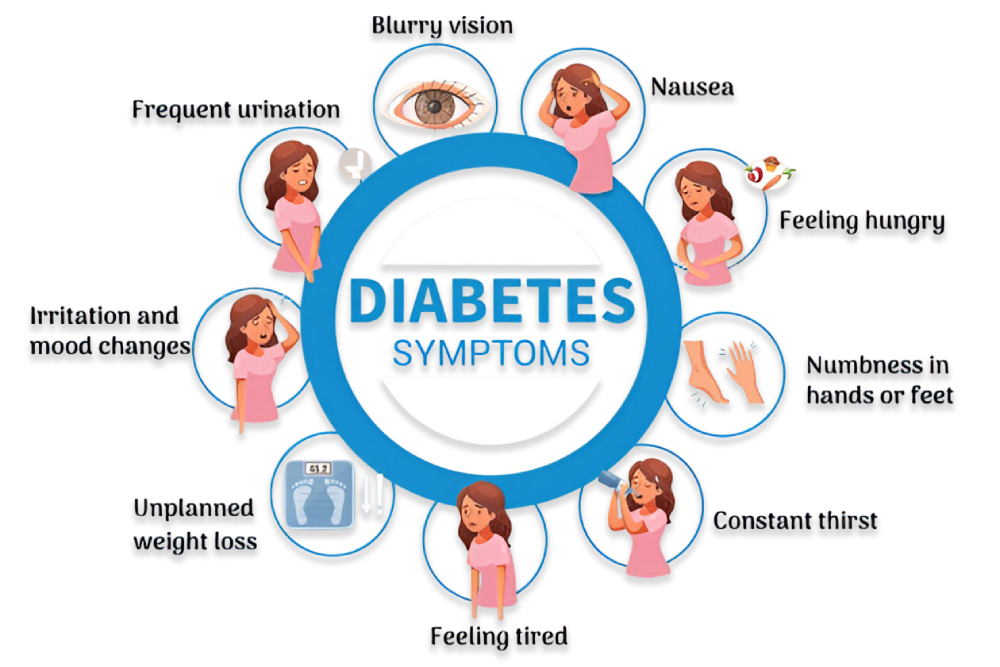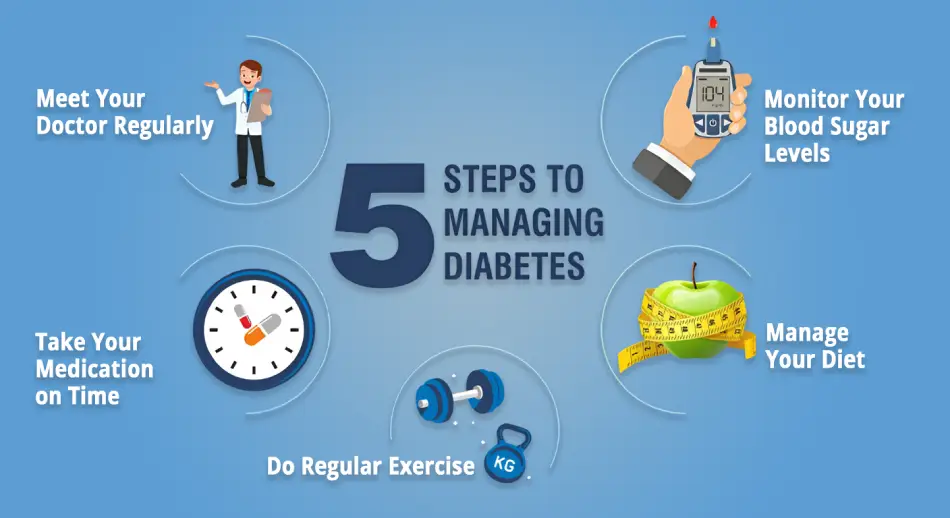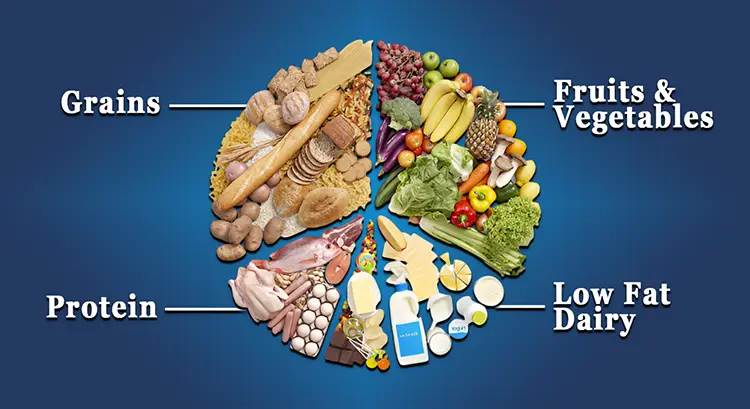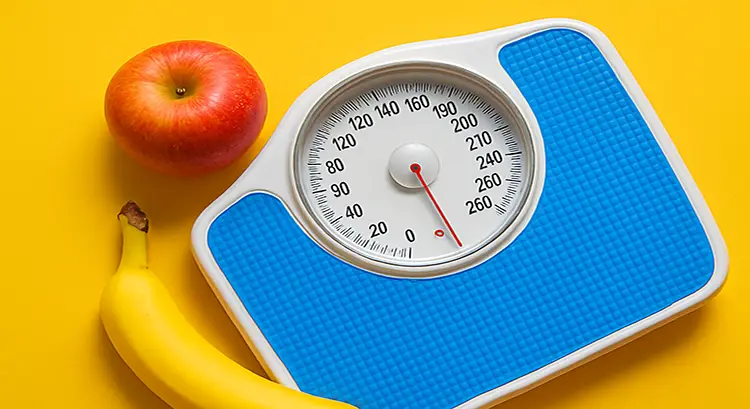Type 2 Diabetes: A Friendly Guide
Type 2 Diabetes:
A Friendly Guide

Understanding Type 2 Diabetes
Let's talk about a major health issue affecting millions around the world: Type 2 diabetes. In just the past decade, some regions have seen nearly a 20 percent increase in cases. This sharp rise highlights how rapidly Type 2 diabetes is becoming a global health crisis, which is why it demands our attention now more than ever. [1] [2]
So, what is Type 2 diabetes? It's becoming increasingly common. Currently, about 11.1 percent of adults aged 20 to 79 have diabetes, and what's even more concerning is that more than 4 in 10 of them don't even know they have the condition. But the numbers don't stop there. More children, teenagers, and young adults are being diagnosed with Type 2 diabetes than in previous generations, raising serious health concerns for the future. [3]
Now, let's break it down. Type 2 diabetes occurs when the body has difficulty using insulin effectively. Insulin is the hormone that helps convert sugar, or glucose, into energy. When this process doesn't work properly, blood sugar levels rise, which can lead to serious health problems over time. [4]
To help make this easier to understand, think of insulin as a key that unlocks the doors to your cells. These cells need sugar to produce energy. But with Type 2 diabetes, those keys aren't working properly. When the body doesn't respond well to insulin, a condition known as insulin resistance, sugar begins to build up in the bloodstream. Over time, this can lead to serious complications such as heart disease, kidney problems, and nerve damage. [4]
Causes and Risk Factors
Now let's explore what causes Type 2 diabetes and the key factors that increase the risk of developing it. This condition can arise from a combination of genetic predisposition, underlying health issues, and lifestyle choices. Factors such as poor diet, lack of physical activity, excess weight, and certain medical conditions all play a role. Understanding these risks is essential for both preventing the disease and managing it effectively once it has been diagnosed.
Genetic Factors
Having a family history of Type 2 diabetes significantly increases your risk of developing the condition. If one parent has Type 2 diabetes, your lifetime risk is estimated at around 40 percent. If both parents are affected, that risk can rise to approximately 70 percent. Scientists have identified more than 150 genetic variations that may contribute to diabetes risk. Many of these genes influence how the body manages insulin and regulates weight, making genetics a key factor in both the development and progression of the disease. [5]
Early Signs of Type 2 Diabetes

It's important to recognize the early signs of Type 2 diabetes because identifying them early can help you address potential health issues before they become more serious. Let's take a closer look at some of these symptoms and what they might mean for your overall well-being.
🍽️ Feeling Hungry
First up, let's talk about hunger. When you eat, your blood sugar levels rise, and your body relies on insulin to convert that sugar into energy for your cells. If your body has trouble using insulin properly, those cells don't get the fuel they need. It's like an engine waiting for gas that never arrives. As a result, you may feel hungry all the time, even right after a meal. [6]
💧🚽 Constant Thirst and Frequent Urination
Because of the constant hunger and the body's difficulty processing glucose, excess sugar builds up in your blood. To get rid of it, your body tries to flush it out through urine. This can lead to more frequent bathroom trips and leave you feeling dehydrated. As a result, you may feel increasingly thirsty, creating a cycle that could be a sign something's not right. [6]
🪫⚖️ Unplanned Weight Loss and Feeling Tired
These symptoms are just the beginning. When your body can't use glucose for energy, it turns to fat and muscle as alternative fuel sources. This can lead to unplanned weight loss and ongoing fatigue. It's like your body is relying on backup power, which it cannot sustain for long. [6]
✋🦶 Numbness in Hands or Feet
Next, another sign to watch for is numbness or tingling in your hands or feet. High blood sugar can damage nerves, a condition known as neuropathy. If left untreated, it may lead to more serious complications. This usually develops gradually, but it can be an important warning sign. [6]
👁️🌫️ Blurred Vision
High blood sugar can also affect your vision. Your eyes are sensitive to changes in blood sugar levels, and when those levels spike, it can cause swelling in the eyes. This leads to blurry vision, similar to looking through a foggy window. That kind of visual distortion is another sign that your body may be having trouble managing glucose. [6]
😠😢 Irritation and Mood Changes
Mood swings are another symptom to consider. If you experience frequent mood fluctuations or irritability, shifting blood sugar levels could be the reason. When your brain doesn't have a steady supply of energy, it can take a toll on your mood and overall mental well-being. [7]
🤢 Nausea
Additionally, nausea might be a sign that something is off in your body and could point to a more serious issue that requires immediate medical attention. This feeling can be unsettling and often appears alongside other symptoms, raising further concern. [8]
Understanding these early warning signs is essential. If you're experiencing any of these symptoms, it's important to consult a doctor. Early detection and treatment can make a significant difference in managing or even preventing complications related to Type 2 diabetes. Protect your health by staying informed, listening to your body, and taking proactive steps.
Preventing Type 2 Diabetes

You might be surprised to learn that preventing Type 2 diabetes doesn't require a complete lifestyle overhaul. Small, consistent changes can have a big impact. It's not about cutting out everything you enjoy. It's about making thoughtful choices that build up over time, beginning with what you eat.
🥦🍎 Start with Food
One of the most effective steps you can take is to increase your intake of fiber-rich foods. Add more fruits, vegetables, and whole grains to your meals. Fiber works alongside your blood sugar, helping to keep levels steady and preventing those dreaded energy crashes. Think of fiber as a sponge that slowly absorbs sugar, rather than letting it rush through your system all at once. [9]
🚶♂️🏃♀️ Get Moving
In addition to making changes to your diet, physical activity plays a key role in supporting your health. You don't need to spend hours at the gym. Moderate exercise can greatly improve how your body uses insulin. Here's a fun fact: just 30 minutes of brisk walking most days can significantly boost insulin sensitivity. Simple choices like taking the stairs instead of the elevator or parking farther from your destination can have a real impact. Every step truly makes a difference. [9]
⚖️ Manage Your Weight
Another important factor is weight management. Although it can be a sensitive subject, maintaining a healthy weight is key to lowering your risk of developing Type 2 diabetes. This isn't about fitting into a certain size or obsessing over a number on the scale. It's about discovering what a healthy weight looks like for you. Even a modest weight loss of 5 to 7 percent can make a meaningful difference. [9]
🥜🍓 Snack Smarter
As you focus on improving your diet and managing your weight, smart snacking can be a helpful strategy. Rather than reaching for chips or cookies, try pairing protein with fiber. A handful of almonds with an apple or Greek yogurt with berries are great options. These snacks help you stay full longer and reduce the risk of energy crashes, which often lead to less healthy food choices. [9]
🚭 Quit Smoking
Beyond diet and exercise, quitting smoking is essential. Cigarette smoke contains chemicals that damage blood vessels and interfere with insulin's ability to work properly, significantly increasing the risk of Type 2 diabetes. If you smoke, quitting is one of the most powerful steps you can take to protect your health and lower your diabetes risk. [9]
🍷🍺 Enjoy Alcohol in Moderation
As you work on lifestyle changes, it's important to be mindful of alcohol consumption. Moderation is key. Drinking too much can disrupt blood sugar levels and lead to weight gain. To enjoy alcohol responsibly, follow recommended guidelines: no more than one drink per day for women and two for men. Keep in mind that a standard drink equals 12 ounces of beer, 5 ounces of wine, or 1.5 ounces of distilled spirits. [9]
🌱✅ Making It Happen
Ultimately, prevention is about making consistent and manageable changes. You do not need to transform your entire lifestyle overnight. Start small by choosing a few tips that feel doable and build from there. Over time, these small steps can lead to lasting and meaningful improvements in your health.
Your body is resilient. Small, consistent choices can lead to meaningful and lasting health benefits. By embracing these simple strategies, you are not only lowering your risk of Type 2 diabetes. You are also building a healthier and more vibrant life, one step at a time.
Managing Type 2 Diabetes

Let's explore practical and actionable steps to manage Type 2 diabetes effectively. This guide breaks down the process into clear, easy-to-use strategies you can start applying right away. No complex medical jargon. Just straightforward advice to help you take control of your health with confidence.
🩺📅 Regular Check-Ups
First, maintaining regular contact with your healthcare provider is essential, much like routine maintenance for your car. Regular check-ups help detect and manage potential health issues early. They also ensure your treatment plan remains appropriate, since your health needs can change over time. These visits offer a chance to fine-tune your approach to managing diabetes and stay on track. [10]
🩸📊 Monitoring Blood Sugar Levels
Next, while monitoring your blood sugar may seem technical at first, it becomes straightforward with a bit of practice. Modern glucometers are user-friendly and make it easy to track your levels. Research shows that regular monitoring is linked to better long-term health outcomes. Knowing your numbers helps you make informed decisions about your diet, exercise, and medication. By taking control of your blood sugar, you empower yourself to make healthier choices and improve your overall well-being. [11]
💊⏰ Taking Medication on Time
Speaking of medication, sticking to your prescribed routine can be challenging when life gets busy. Still, consistency is key to managing diabetes effectively. To stay on track, try setting phone reminders, using a pill organizer, or asking a friend or family member for support. A little help can go a long way in keeping your health on course. [12]
🥗🍓 Managing Your Diet
Now, let's talk about diet. The good news is that eating well with diabetes can be both delicious and satisfying. Focus on building vibrant, colorful plates filled with fresh vegetables, lean proteins to keep you full, and whole grains for steady energy. You might wonder if this means saying goodbye to your favorite foods. Definitely not. It's all about making smarter choices. For example, when you crave something sweet, reach for a handful of berries instead of a candy bar. Berries are rich in fiber and natural sugars, offering sweetness without the blood sugar spike. The goal is to make choices that work for you and support your health. [13]
🏃♂️🕒 Engaging in Regular Exercise
Lastly, exercise is a key part of managing diabetes. You do not need intense workouts to see benefits. The goal is 150 minutes of moderate activity each week. This can include brisk walking, dancing, swimming, gardening, or any activity that gets your heart rate up and feels enjoyable. Breaking your movement into smaller intervals throughout the day can also be effective. For example, a 15-minute walk after lunch can make a meaningful difference. [14]
Balanced Diabetes Diet

This overview offers practical steps to help you build a balanced diet for managing diabetes. Navigating a health condition through food choices can feel overwhelming, but we will keep things simple and actionable. The goal is to make healthy eating approachable, sustainable, and tailored to your needs.
🌾🍞 Embrace Whole Grains
First, let's talk about making thoughtful swaps. Choosing brown rice instead of white, or whole wheat bread instead of refined bread, might sound repetitive, but there is a good reason for it, especially when it comes to blood sugar. Whole grains are rich in fiber, which acts like a bouncer at the door, slowing sugar absorption and helping prevent those frustrating spikes and crashes in energy. As you shop, take a moment to explore the whole grain options and choose what genuinely appeals to you. [15]
🥦🌽 Celebrate Veggies
After locking in those whole grains, it's time to explore the vibrant world of vegetables. And no, this doesn't mean settling for a lonely pile of iceberg lettuce. Think of your plate as a canvas. Fill it with bright bell peppers, deep green spinach, crisp broccoli, and sweet carrots. The more colors you include, the better. These nutrient-packed vegetables are low in calories and rich in health benefits, making them a powerful addition to your daily routine. [15]
🍗🐟🥜 Include Lean Proteins
Now that we've covered grains and vegetables, let's turn to protein. Including lean sources such as chicken, fish, beans, and nuts is essential for a balanced diet. These foods provide the protein your body needs to support healing and repair, without adding excess fat. This helps maintain stable blood sugar levels and contributes to your overall well-being. [15]
🥛🧀 Low-Fat Dairy
Here's an interesting point: low-fat dairy. You might be surprised, but some studies suggest it may help reduce the risk of developing Type 2 diabetes. The key is to limit saturated fat, which is found in higher amounts in full-fat options. Low-fat dairy still provides beneficial nutrients like calcium, vitamin D, and protein, which may support metabolic health and aid in diabetes prevention. [16]
🚫🍬🥤 Addressing Added Sugars
As we think about what to include in our diets, it's just as important to consider what to limit. Added sugars in drinks and snacks are major contributors to blood sugar spikes. One study found that replacing just one sugary drink a day with unsweetened coffee, tea, or water could reduce the risk of developing Type 2 diabetes by up to 25 percent. Choosing a piece of fruit instead of a sugary snack can also make a meaningful difference. Your body and your blood sugar will benefit from these healthier choices. [17]
🍽️📏 Portion Control
Finally, no dietary plan is complete without addressing portion control. This principle applies to all foods, even the nutritious ones. Eating too much, even of healthy options, can contribute to weight gain and disrupt blood sugar management. Pay attention to your portion sizes and listen to your body. It will let you know when you have had enough. [18]
To sum it all up, managing your diet for diabetes does not have to feel like a constant struggle. Focus on whole grains, fill your plate with vegetables, choose lean proteins, be mindful of your dairy options, cut back on added sugars, and keep portion sizes in check. The goal is to build a sustainable eating pattern that feels good and supports your health. Small changes, made consistently, can lead to big results over time.
Optimal Food Choices for Diabetes

You might be thinking, "Oh no, another 'good foods vs. bad foods' list?" But this isn't about that at all. Instead, we're on a mission to go beyond the basics and explore how certain foods can be powerful allies in managing blood sugar. It's not just about restriction. It's about discovering what works for your body, what nourishes you, and what helps you feel your best. With the right choices, food becomes a tool for healing, energy, and long-term health.
🥬🌿 Leafy Greens
Leafy greens, you know them, you love them. Spinach, kale, Swiss chard. They're low in calories and carbs, which is great, but there's so much more to them than that. For starters, they have a low glycemic index, so they won't send your blood sugar on a roller coaster ride. They're also loaded with vitamins and minerals. Some research even suggests that vitamin K, which is plentiful in leafy greens, may help improve insulin sensitivity. That is a pretty big deal. [15]
🌾🍞 Whole Grains
Next up, we have whole grains: brown rice, quinoa, oats, and whole wheat. These are the real MVPs, and their secret weapon is fiber. Fiber acts like a superhero for blood sugar management. It slows down digestion and helps regulate how glucose is absorbed into your bloodstream. The result? Steady energy levels. No wild spikes, no sudden crashes, just smooth sailing through your day. [15]
🍗🐟🥜 Lean Proteins
Now let's talk protein, specifically lean protein. Think chicken, turkey, fish, beans, lentils, and tofu. These options are fantastic for keeping you satisfied and supporting muscle maintenance, all without the excess saturated fat that can complicate blood sugar control. Lean protein helps stabilize energy levels and keeps cravings in check, making it a smart choice for both strength and balance. [15]
🥜🌰 Nuts and Seeds
Now here's where things get really interesting. It's time to give some love to the nuts and seeds: almonds, walnuts, chia seeds, and flax seeds. These little guys are nutritional powerhouses. They deliver healthy fats, protein, and fiber, all packed into a tiny, efficient package. Not only can they help regulate blood sugar, but those good fats also support heart health. It's a win-win for your body and your taste buds. [15]
🍓🫐 Berries
Now, I know some of you might be thinking about fruit, especially with all this talk about sugar. And it's true, we want to be mindful of how much sugar we consume. But here's the good news: not all fruits are created equal. Take berries for example: strawberries, blueberries, raspberries. They tend to be lower in sugar than many other fruits, and they're loaded with antioxidants and fiber. So go ahead and enjoy those delicious berries, knowing they're a smart choice for both your blood sugar and your taste buds. [15]
🥣🧬 Greek Yogurt
Now let's move on to an unsung hero in the world of diabetes-friendly foods: plain low-fat Greek yogurt. It's a protein powerhouse, no doubt about it. But what makes Greek yogurt even more special is its probiotic content, those beneficial bacteria that do wonders for your gut health. And here's the exciting part: growing research is revealing a strong link between a healthy gut and improved blood sugar regulation. So Greek yogurt isn't just helping you stay full, it's working on multiple levels to support your overall well-being. [15]
🍠✨ Sweet Potatoes
All right, next up, let's talk about sweet potatoes. They sometimes get a bad rap because of their natural sweetness, but unlike white potatoes, they have a lower glycemic index. That means they're less likely to cause rapid spikes in blood sugar. As a bonus, sweet potatoes are packed with fiber and essential vitamins. They're a delicious and nutritious choice that supports steady energy and overall health. [15]
🥑🫒🐟 Healthy Fats
Now let's talk about fats for a minute. For years, we've been told to steer clear of fat, but here's the truth: not all fats are created equal. Avocados, olive oil, and fatty fish are rich in healthy fats that are essential for heart health. Even more fascinating, studies suggest these fats may improve insulin sensitivity, which is a key factor in managing blood sugar effectively. So when chosen wisely, fats aren't the enemy. They're part of the solution. [15]
So there you have it, a deep dive into the world of diabetes-friendly foods. Managing blood sugar doesn't mean giving up flavor or enjoyment. These foods are delicious, versatile, and easy to weave into your daily routine. With the right choices, you're not just supporting your health, you're elevating your meals.
How Water Impacts Blood Sugar Levels

We're about to explore a fascinating topic: how water impacts blood sugar levels. Whether you're managing diabetes or simply curious about the broader effects of hydration on health, this is information worth knowing. Staying hydrated isn't just about quenching thirst; it plays a vital role in how your body processes glucose, maintains energy, and supports overall well-being.
💧🧠 Let's start with the basics. Everyone knows water is essential for overall health, but its role in managing blood sugar often flies under the radar. Staying well-hydrated can be a surprisingly powerful tool for regulating glucose levels, especially for those living with diabetes. [19]
🚱⚠️ When blood sugar levels rise, your body works to flush out the excess glucose through urine. This process uses up water, which increases the risk of dehydration. Think of it like making sweet tea with too little water; it turns thick and overly sweet. The same thing happens in your bloodstream when you're dehydrated: glucose becomes more concentrated, making blood sugar levels harder to manage. [19]
🫗✨ But here's the good news. Drinking enough water can help dilute excess glucose, making it easier for your body to maintain balance. It's just like adding more water to that overly sweet tea. It restores the right consistency. Best of all, water is calorie-free, carb-free, and sugar-free. It won't disrupt your blood sugar like other beverages might. [19]
🩺🧪 Now let's shift our focus to the kidneys for a moment. They act as highly efficient filters, constantly working to remove excess glucose from your blood. But to do their job properly, they need water. Staying well-hydrated helps your kidneys function optimally. That, in turn, can contribute to better blood sugar control. [19]
🥤📏 So, how much water should you be drinking. General guidelines suggest around 1.6 liters per day for women (about 6.5 cups) and 2 liters for men (about 8.5 cups). However, individual needs vary depending on factors like activity level, climate, and overall health. The key takeaway is simple. Listen to your body. If you're thirsty, drink more water. [19]
To wrap things up. The next time you reach for a drink, consider the quiet power of plain water. It's more than just thirst relief. It's a simple and effective way to support blood sugar balance and nourish your overall well-being. Sometimes the simplest choices are the most powerful.
Exercise and Diabetes Management

You know how everyone talks about exercise being great for your health. Well, it's especially crucial when it comes to managing diabetes. Regular physical activity not only helps improve insulin sensitivity. It also plays a vital role in keeping your blood sugar levels stable. Let's dive into how this all works.
Benefits of Exercise for Diabetes
Lowers Blood Sugar
To begin, let's highlight a core benefit. Exercise lowers blood sugar levels. When you move your body, your muscles use glucose for energy. They absorb glucose from your bloodstream, acting like little sponges. The result is lower blood sugar levels. [20]
Improves Insulin Sensitivity
But that's just the beginning. Regular exercise doesn't only lower glucose levels. It also boosts your body's ability to use insulin more effectively. Picture this. With every workout, your cells become more responsive to insulin, whether it's produced naturally or delivered through medication. This increased sensitivity helps your body regulate blood sugar more efficiently. It lays a strong foundation for long-term diabetes management. [20]
Promotes Weight Management
Now, if you're managing type 2 diabetes, you know that maintaining a healthy weight can sometimes feel like an uphill battle. Thankfully, exercise is a powerful ally. Regular physical activity helps you maintain a healthy weight and may even help you shed extra pounds. This not only boosts your self-esteem. It also strengthens your progress in managing diabetes more effectively. [20]
Reduces Complications
Here’s where exercise shines even brighter. It acts like a superhero for your heart. When you engage in regular physical activity, you strengthen your heart, improve blood flow, and significantly reduce the risk of serious complications like cardiovascular disease. This connection between exercise and heart health highlights just how beneficial staying active can be. [20]
Effective Exercises for Diabetes Management
Now that we understand the benefits, let's explore the best exercises for diabetes management. Think of it like crafting a balanced meal. Variety is key.
🚶♀️🏊♂️🚴♂️💃 Aerobic Exercise
First up is aerobic exercise, also known as cardio. Activities like walking, jogging, biking, swimming, or dancing are all great options. Anything that gets your heart pumping can make a big difference. Aim for at least 30 minutes of aerobic exercise most days of the week to maximize the benefits. [20]
🏋️♂️🧍♂️🧘♀️ Resistance Training
Moving on, let's not forget about resistance training. This type of exercise builds muscle through activities like lifting weights, using resistance bands, or doing bodyweight movements such as push-ups and squats. Strength training helps your body use glucose more effectively. It also increases overall strength and boosts metabolism. Aim to include strength training two to three times a week for a well-rounded routine. [20]
🧘♂️🌀🦶 Flexibility and Balance Exercises
In addition, let's not overlook flexibility and balance exercises. Practices like yoga, tai chi, or regular stretching can dramatically improve mobility and overall well-being. Maintaining flexibility and balance is essential for staying active and independent as you age. It also helps reduce the risk of falls. [20]
📅🔁❤️ Stay Consistent
Alongside the physical benefits, there's one last crucial point to remember. Consistency is key. Just as taking your medications regularly is important, making exercise a routine part of your life is essential. You don't need intense workouts or marathon ambitions. The goal is to find activities you genuinely enjoy and can realistically fit into your daily life. [20]
Remember that exercise is an amazing tool for stress reduction. It can lift your mood and give you a lasting sense of well-being. It's like a secret weapon for both your body and your mind. So lace up those sneakers, find an activity you love, and get moving.
Weight Loss and Managing Diabetes

Let's talk about how weight loss can influence diabetes management. Shedding even a modest amount, just 5% to 7% of your body weight, can lead to meaningful improvements in blood sugar levels. This degree of weight loss also boosts insulin sensitivity, helping your body regulate glucose more effectively on its own. The best part? You don't need drastic changes to see real benefits. Small, consistent steps can lead to significant progress.
🥗🍞🥦 Balanced Diet
As we explore weight loss, it's important to highlight the role of diet in diabetes management. A balanced diet, focusing on vegetables, lean proteins, and whole grains, is a crucial starting point. This doesn't mean cutting out the foods you love; it's about making smart choices. Incorporating nutrient-dense foods helps stabilize blood sugar and keeps you feeling full longer. Simple swaps, like choosing non-starchy vegetables or opting for whole grains instead of white bread, are easy and effective changes. [15]
🚶♂️🏃♀️💃 Regular Exercise
As you adjust your diet, incorporating physical activity is equally important. Staying active complements healthy eating and plays a key role in overall well-being. Aim for at least 30 minutes of exercise on most days. The secret is to choose activities you genuinely enjoy, whether it's walking, cycling, or even dancing around your living room. When workouts are fun, it's much easier to stay committed and make movement a regular part of your routine. [20]
🍽️📏 Portion Control
Now that you're focusing on diet and exercise, it's important to consider another key factor: portion control. Being mindful of how much you eat can have a meaningful impact on your progress. Even healthy foods can lead to overeating if portion sizes aren't managed. Paying attention to servings helps you stay on track and supports your long-term health goals. [18]
💧🥤 Stay Hydrated
As you focus on diet and exercise, don't overlook the importance of hydration. Drinking plenty of water throughout the day is a simple and effective way to support weight management and overall health. Keeping a water bottle nearby reinforces the habit and helps ensure your body stays well-hydrated and functioning at its best. [19]
🤝🗣️ Seek Support
Finally, navigating these changes can be challenging without support. Joining a weight loss group or consulting a registered dietitian can offer motivation and personalized guidance to help you create a plan that works for your lifestyle. When combined, these strategies support effective diabetes management and improve overall well-being. Start today by making one small change, such as drinking a bit more water or taking a short walk. Every step toward a healthier lifestyle truly makes a difference.
Sleep and Diabetes Management

Le's explore the crucial link between sleep and diabetes management. Most adults are familiar with the recommendation to aim for at least seven hours of sleep each night. This guideline is not arbitrary; it plays a vital role in overall health, especially for those living with diabetes. Quality sleep helps regulate hormones that affect blood sugar levels, supports insulin sensitivity, and reduces stress, all of which contribute to better diabetes control.
💉🔄 Insulin Resistance
First, let's take a closer look at insulin resistance. When we consistently don't get enough sleep, our cells can become less responsive to insulin. As a result, insulin has a harder time regulating blood sugar levels effectively. Studies show that sleep deprivation can reduce insulin sensitivity, making it more difficult to maintain stable blood sugar and creating a cycle that's challenging to break. [21]
⚖️🍔😴 Difficulty in Losing Weight
Building on the issue of cravings, we should also consider how sleep affects weight management. Not getting enough sleep consistently can make it much harder to lose weight. Since maintaining a healthy weight is essential for effective diabetes management, this cycle becomes especially concerning. Poor sleep disrupts appetite-regulating hormones, often leading to unhealthy eating patterns and making weight management more difficult. [22]
❤️📈 Higher Blood Pressure
Continuing on, it's important to highlight another consequence of poor sleep: higher blood pressure. Not getting enough rest can lead to elevated blood pressure, which increases the risk of serious health issues, especially those related to the heart. This reinforces the idea that prioritizing sleep isn't just about managing blood sugar levels; it's also essential for maintaining overall health and protecting cardiovascular well-being. [23]
🛡️🦠 Weaker Immune System
Sleep plays a critical role in supporting immune function. When you're sleep-deprived, your body produces fewer infection-fighting cells and antibodies, which makes you more vulnerable to illness. For people living with diabetes, weakened immunity can slow recovery and raise the risk of infections. Prioritizing sleep helps strengthen your body's natural defenses and supports better overall health. [24]
🛏️⏰ With all this in mind, it's helpful to review the sleep needs across different age groups. Understanding how these requirements evolve over time can give you better insight into your own changing sleep patterns.
| Age group | Age range | Recommended hours of sleep |
|---|---|---|
| Newborns | 0-3 months | 14-17 hours per day (including naps) |
| Infants | 4-11 months | 12-15 hours per day (including naps) |
| Toddler | 1-2 years | 11-14 hours per day (including naps) |
| Preschoolers | 3-5 years | 10-13 hours per day (including naps) |
| School-age | 6-13 years | 9-11 hours per night |
| Teenagers | 14-17 years | 8-10 hours per night |
| Adults | 18-64 years | 7-9 hours per night |
| Older adults | 65 years and older | 7-8 hours per night |
Take a moment to reflect on your sleep habits. Are you consistently getting the essential hours of rest your body needs? Consider how your current sleep patterns may be affecting your diabetes management, energy levels, and overall well-being. It might be time to make sleep a priority. Often overlooked, it could be one of the most powerful steps you can take toward better health.